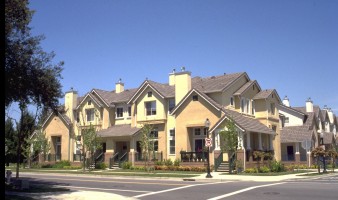Widgetized Section
Go to Admin » Appearance » Widgets » and move Gabfire Widget: Social into that MastheadOverlay zone
Mapping as Citizen Engagement in the Fight for Affordable Housing
The views expressed are those of the author and do not necessarily reflect the views of ASPA as an organization.
By Michael Silliman
July 16, 2018
The housing supply is being squeezed from every angle, leaving behind millions of Americans to fend for themselves and citizen engagement groups try to find solutions. The United States is surprisingly underdeveloped, particularly in key areas near transit and rapidly growing urban centers. The type of housing being built is not flexible in usage nor serves the greatest citizen concerns such as family, workforce and affordable housing options. Moreover, subsidized and rent-controlled housing units are expiring in cities like Washington, D.C. and San Francisco, as these are being flipped to market rate units faster than new affordable housing can be politically willed into creation.
The scope of this problem and who is most affected is alarming.
According to the rental housing advocacy organization Make Room USA, nearly 11 million Americans, including 2 million seniors, can barely pay their rent each month. The DC Fiscal Policy Institute says,
“The scale of this problem in DC is enormous. Some 26,000 households are both extremely low-income and spending more than half their income on rent. Nearly one of every five children in the District faces such situations.”
Even worse, homelessness in cities like Atlanta, Los Angeles and Seattle shows:
- this is a national problem; and,
- it has only been getting worse over the last decade since the peak of the housing crash in 2008.
As a response, as small as it may feel in the face of this national affordable housing crisis, citizens in communities across the country are starting to organize; creatively documenting and telling the stories of this new housing crisis and the inequality it is creating, as well innovative ways to build for everyone. One of the tools these citizen engagement groups are using is collecting open sourced data and mapping.
The first example is a group of volunteers for a civic tech organization called Code for D.C. that came together to build an online tool to find and track current affordable housing. The tool, Housing Insights, documents every affordable housing unit in Washington, D.C. along a whole dataset of variables from zoning and number of units to subsidy program and ownership type. Affordable housing activists (full transparency: this includes some groups I am a part of), are using this tool to organize around and support vulnerable housing projects.
Another example comes from Matthew Desmond, a sociologist and Pulitzer Prize winner who authored Evicted, Poverty and Profit in the American City. Desmond has worked with students at Princeton University to create The Eviction Lab, the first nationwide database of evictions — a platform where you can create custom maps, charts and reports of eviction statistics in your neighborhood. “The lab has collected 83 million records from 48 states and the District of Columbia,” and, “Desmond estimates that 2.3 million evictions were filed in the U.S. in 2016” (NPR). This is powerful information at the fingertips of laypeople, public servants, and politicians alike.
Yet another example of civic mapping in the housing space is Prologue DC, which is a public history project documenting the historic segregation of D.C.’s housing, primarily focusing on racially restrictive housing covenants, which had a dramatic impact on the development of the nation’s capital decades before government-sanctioned redlining policies were implemented in cities across the country. They are telling the story of D.C.’s racial housing history using GIS mapping. Check out their interactive map stories here.
However, mapping the historical racial issues and the current affordability crisis is not for the sole purpose of telling the stories of those most affected. Another example, which is still only theatrical from my understanding, is the idea to create a map of affordable housing opportunities. Retaining the current affordable housing is not enough. So where are the best places to build new or convert old buildings into affordable housing? A group in D.C., again that I am a part of, has started to think about doing just this. Pouring over property tax data to find city-owned land, vacant properties, and searching for underutilized spaces, we have started to build a list. Other cities, such as Cleveland, have done just this. What would it take to turn this into a full-scale, nationwide project? What would a model for turning these opportunities into reality look like? Could a group of concerned citizens, of public servants and administration wonks, pull this off?
Author: Michael Silliman holds a Master’s in Public Administration from George Mason University and during the day works as a Program Manager at ICMA (International City/County Management Association). He studies and writes on the topics of civil society, community development and third-party governance. You can reach Michael at [email protected] or follow him on twitter @michaelsilliman


Follow Us!